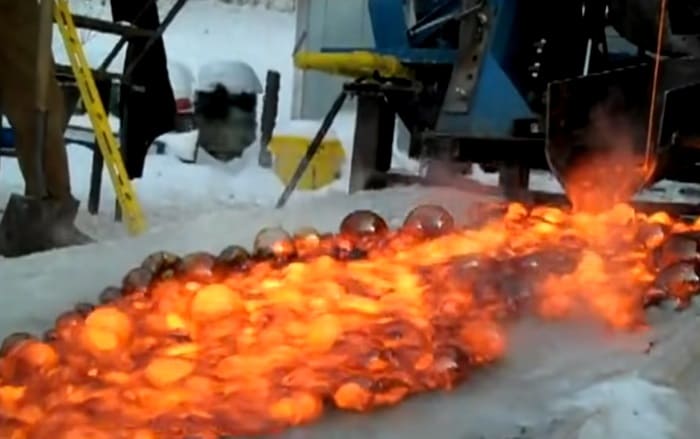The temperature of lava can be up to 1250 °C and Oymyakon which is the coldest place in the north pole, the temperature there remains up to -67.7 °C. So what will happen when such boiling lava and freezing ice meet, so let's try to find out the answer to this question in today's article.
Well, after listening to this question, you must have felt that there will be a big explosion as soon as the lava comes in contact with the ice. But in reality, nothing like this happens, in fact, when the boiling lava meets the cold ice, it starts to float on the ice. Yes, it is true, so let's try to understand it in a little scientific way. Syracuse University professors Bob Wysocki and Jeff Karson, along with some researchers, did a real-life experiment on lava and ice. In this experiment, they poured 300 kilograms of molten lava on a big ice cube, now as soon as the lava came in contact with the ice, there was no explosion nor did the entire ice melt. Rather there the lava took a somewhat strange-looking bubble form, initially, these bubbles were of lava color, but soon they turned into black color.
Read:-What If A Diamond Is Thrown Into The Hot Lava? Can Lava Melt A Diamond?
But when the researchers were asked about the reason, they said that the temperature of the lava was so high that as soon as it came in contact with the ice, it directly converted the ice from a solid to a vapor state. And while escaping, these vapors were forming bubbles in the lava, which made it look like the lava was boiling. Another interesting aspect that came to the fore in this experiment was that as soon as the lava meets the ice, it starts flowing on its surface. But how did this happen? Let us explain to you.
Read:-Which Is The Liquid That Gets Freeze When It Touches The Lava
This usually happens due to the formation of superheated steam. Like we told you earlier that as soon as lava meets with ice, it converts it into vapors. Now some vapors escape the lava by forming bubbles, but the vapors that cannot come out, form a layer of steam on the surface of the ice. This layer minimizes the frictional force of lava and ice, due to which rather than ice melting, the lava starts floating on the ice surface, and then after a while, the lava cools down and becomes covered in igneous rock.














0 comments:
Post a Comment